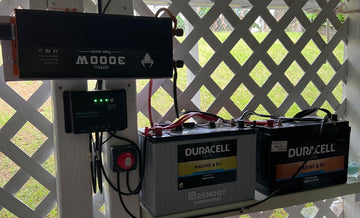With the rapid development of science and technology, lithium-ion batteries have become an indispensable source of energy in our daily lives, and are widely used in various electronic devices such as smartphones, laptops, and electric vehicles. However, the life and performance of lithium-ion batteries are affected by a variety of factors, among which the charging method is particularly important. In this article, we will discuss the best practices for charging lithium-ion batteries to help readers develop good charging habits, thereby extending the life of the battery and maintaining its optimal performance.
Understanding Lithium-Ion Batteries
Lithium-ion batteries are high energy density secondary batteries that rely on the movement of lithium ions between the positive and negative electrodes to realize the charging and discharging process. This battery consists of a positive electrode, negative electrode, electrolyte and diaphragm, etc., of which the positive electrode is usually made of materials such as LiCoO2, LiNiO2 or LiMn2O2, and the negative electrode is mainly composed of graphite crystals. Li-ion batteries are characterized by high energy density, long life, no memory effect, green and can be used in a wide temperature range. Its storage energy density is as high as 460-600Wh/kg, which is about 6-7 times higher than that of lead-acid batteries. Lithium-ion batteries are widely used in electric vehicles, smart phones, laptops and other electronic products, becoming an indispensable source of energy in the development of modern technology.
Best practices for charging lithium-ion batteries
Choose the right charger
Choosing the right charger is the key to ensuring safe and efficient charging of lithium-ion batteries. It is recommended to use the original charger or a certified compatible charger to ensure that the charging power and current match the battery. Meanwhile, avoid using low quality chargers that may cause damage to the battery.
Correct Charging Method
The correct charging method is critical to the life and performance of lithium-ion batteries. During the charging process, the battery goes through two stages: constant current charging and constant voltage charging. In the constant current charging stage, the charger charges the battery at a constant current; in the constant voltage charging stage, the charger charges the battery at a constant voltage until the battery is full.
Avoid overcharging and overdischarging to keep the battery in the best condition. It is also recommended to periodically perform cycles of complete discharge and complete charge to activate the chemicals inside the battery and improve battery performance.
Charging Environment
The charging environment also has an effect on the charging effectiveness of lithium-ion batteries. During the charging process, the temperature of the charging environment should be kept within a suitable range to avoid damage to the battery caused by too high or too low temperatures. It is also important to maintain the humidity and cleanliness of the charging environment to avoid dust and moisture from entering the charger or inside the device, resulting in a short circuit or malfunction. Avoid using the device as much as possible while charging to minimize the burden on the battery and heat generation.
Precautions
During the charging process, you also need to pay attention to some details. First, avoid using unofficial recommended charging accessories, such as non-original data cables and charging heads, to avoid damage to the battery. Second, don't cover the charger or device while charging to avoid affecting heat dissipation and charging effect. Finally, check the health of the battery regularly, if you find abnormalities such as battery bulging and leaking, you should stop using it immediately and contact a professional to deal with it.
Suggestions to extend the life of lithium-ion batteries
Reduce complete discharge and deep discharge
Frequent complete discharge and deep discharge will accelerate the aging process of lithium-ion battery. Therefore, in daily use, you should try to avoid letting the battery drain to less than 0%. At the same time, keeping the battery charge in the range of 20% to 80% for use will help prolong the battery life.
Avoid high and low temperature environments
Both high and low temperature environments can adversely affect the performance and life of lithium-ion batteries. In high-temperature environments, the chemical reactions within the battery will accelerate, resulting in faster battery aging; in low-temperature environments, the activity of the battery will decrease, and charging and discharging capabilities will be affected. Therefore, exposure of the battery to extreme temperatures should be avoided as much as possible during use and charging.
Regular Maintenance and Updates
Regular maintenance and updates to your device can optimize battery management features and improve battery performance and life. For example, updating the device's operating system and applications can fix potential battery management issues; regularly cleaning up the device's memory and storage space can reduce battery load and heat generation. In addition, some professional battery management software can help users monitor battery health and provide maintenance recommendations accordingly.
Storage and Transportation Recommendations
If the lithium-ion battery will not be used for a long time or needs to be transported to other places, it is recommended to keep the battery charge at about 50% and store it in a dry, cool and ventilated environment. During transportation, avoid exposing the battery to extreme temperatures, humidity or vibration to ensure the safety and stability of the battery.
Lithium-ion battery charging misconceptions and corrections
Lithium-ion battery charging there are some common misconceptions, the following are these misconceptions and their correction methods:
Misconception 1: new batteries need several times fully charged and discharged to activate the
Correction: Lithium-ion batteries have already completed the initialization process at the time of manufacture and do not require a special activation step. Early types of batteries that need to be activated are mainly nickel-cadmium batteries and nickel-metal hydride batteries, while modern lithium-ion batteries do not have the memory effect, can be charged at any time, without the need for full charge and discharge activation.
Myth 2: Reducing the number of recharges can extend battery life
Correction: The life of lithium-ion batteries is related to the number of charge/discharge cycles, but it does not mean that reducing the number of charge times can extend the life. Lithium-ion batteries have no memory effect and can be recharged at any time, and frequent shallow charging and discharging is more helpful to extend their life. Therefore, it is recommended to charge the battery in time when there is still about 20% of power left to avoid over-discharging the battery.
Myth 3: Overcharging will cause battery explosion
Correction: Lithium batteries generally have safety protection circuits and a variety of safety devices, which can automatically cut off the circuit when overcharging and discharging and short-circuiting to avoid battery explosion. Unless there is a quality problem with the battery, it will not explode due to prolonged charging. However, in order to maintain the best performance of the battery, it is still recommended to disconnect the charger in time after a full charge.
Myth 4: Storing a fully charged battery for a long period of time maintains battery performance.
Correction: Prolonged storage at full charge will lead to a reduction in the capacity of lithium batteries, as lithium batteries will maintain a high voltage in a fully charged state, which may accelerate battery aging. It is recommended to keep the battery charge at about 50% for storage, which can prolong the battery life.
Myth 5: Charging with a non-specialized charger
Correction: Charging with a charger that is not compatible with lithium batteries may result in unstable voltage and current, which may damage the battery or cause safety problems. Therefore, it is recommended to use a dedicated charger compatible with lithium batteries for charging to ensure battery safety and performance.
Conclusion
Through this article, we have learned the best practices for charging lithium-ion batteries and recommendations for extending their life. Choosing the right charger, adopting the correct charging method, paying attention to the charging environment, and avoiding some common misconceptions are all key to ensuring the safe and efficient charging of lithium-ion batteries. At the same time, we also need to pay attention to the maintenance and care of the battery in order to extend its life and maintain the best performance. Let's develop good charging habits to protect our electronic devices and their batteries.













